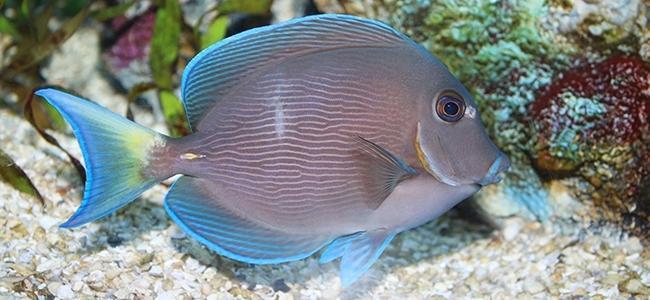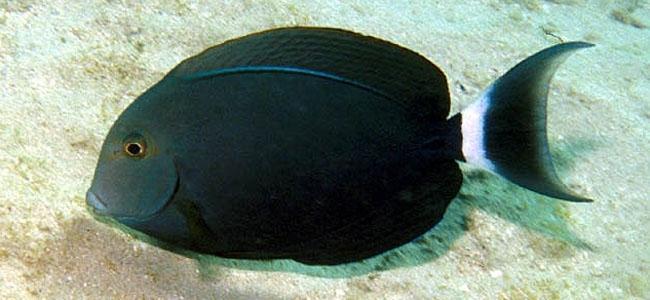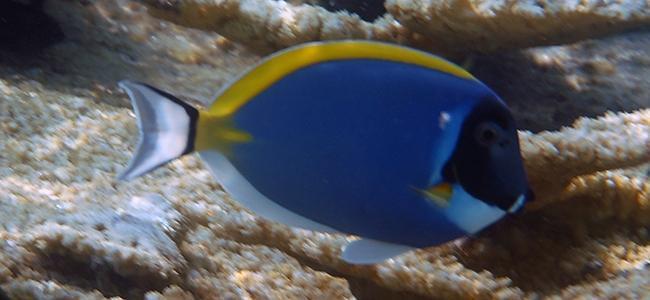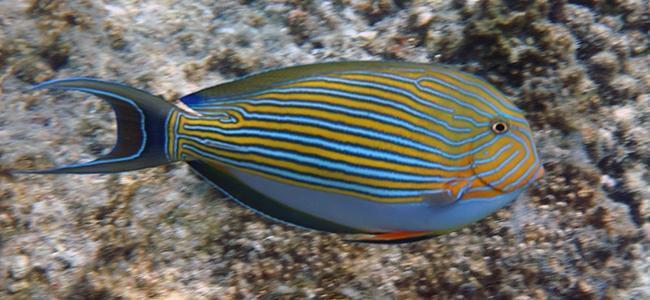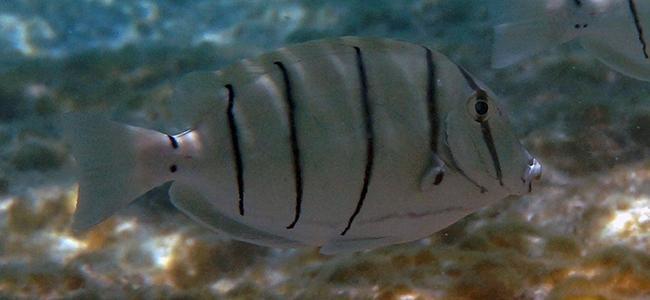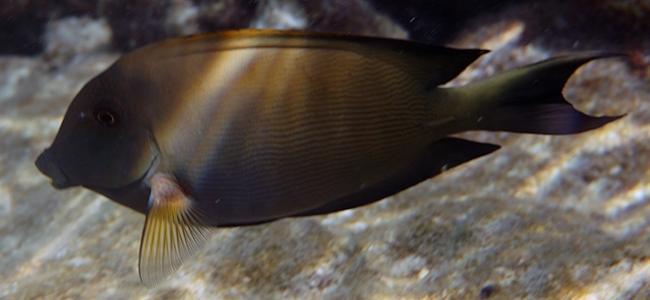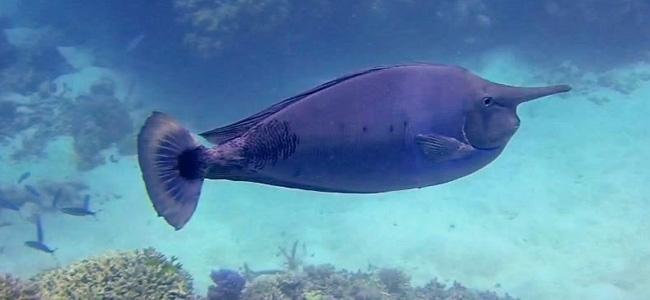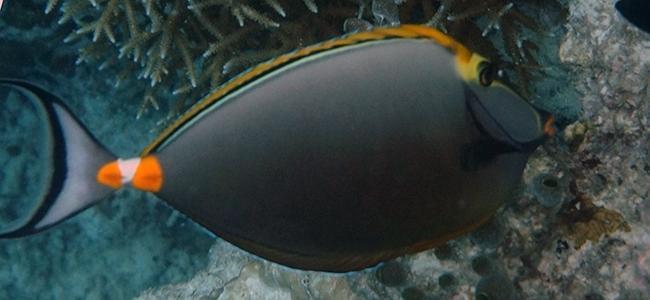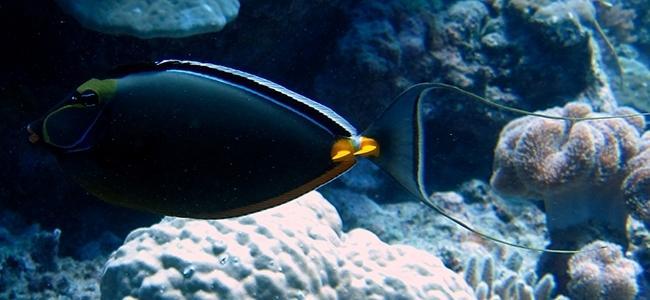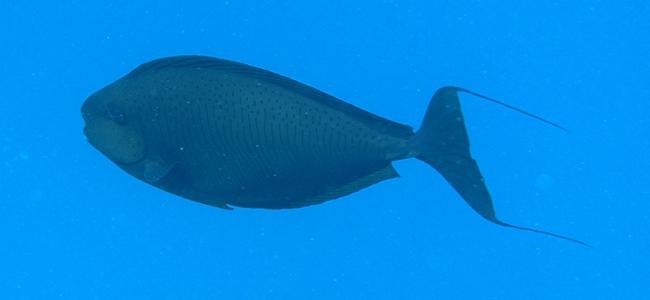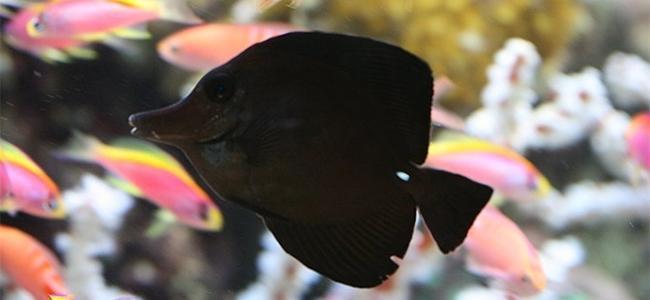Within the order of the Perciformes, we find the family Acanthuridae, or also known as the Surgeonfishes. Its name derives from two Greek words, on the one hand, akantha meaning spine, and on the other oura meaning tail, in reference to their distinctive and characteristic extremely sharp spine or scalpel at the base of the tail. They may have between 1 and 3 of these modified spines at the base of their tails. These are extensible and are used as a defensive method against possible aggressions.
These are exclusively marine fish, present in all tropical and subtropical seas, although their absence in the Mediterranean Sea is noteworthy. With very bright and colourful colours, we are in front of one of the families that we will most enjoy seeing underwater. The body shape of the Surgeonfishes is oval and very compressed laterally. In general, they do not exceed 30 cm in length. An exception is the case of Naso annulatus, which can reach up to 1 meter in length. Surgeonfishes have a small, terminal mouth on their body, which has a single row of teeth that have adapted to tear off the Algae on which they feed. Generally, they form large schools of individuals that move around to feed in groups, although there are also some species that are solitary.
The dorsal fin of Surgeonfishes is unique and is composed of 4-9 spines followed by 19-31 radius. Both the dorsal and anal fins are very long, and generally extend over almost the entire length of the body. The anal fin is made up of 2-3 spines and 19-36 spokes. Pelvic fins have 1 spine and 3-5 spokes. In the genera Naso and Paracanthus, the number of radii of the pelvic fins is 3.
There are 73 species of Surgeonfishes described, grouped into 6 genera.

